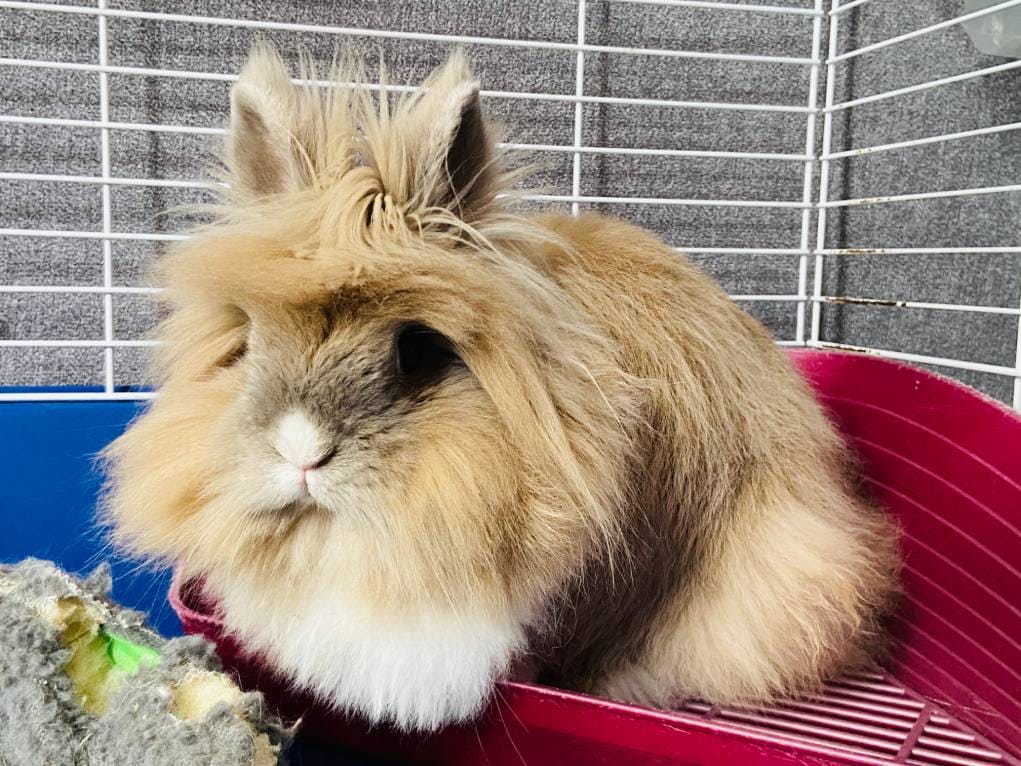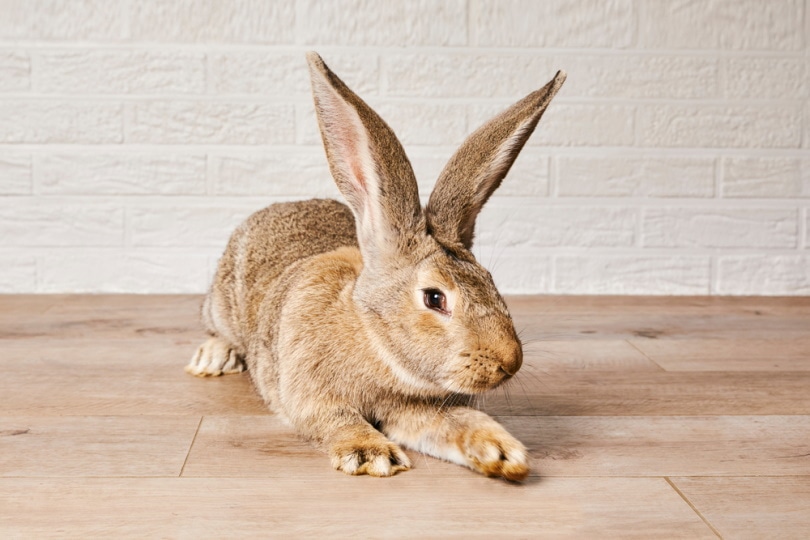
Click to Skip Ahead
Featuring a silver coat with black markings, the Champagne d’Argent rabbit has a beautiful coat and an amiable personality to match. They’re very gentle creatures that generally like to be around people, especially if they’ve been socialized from a young age.
| Height: | Large |
| Weight: | 9–12 pounds |
| Lifespan: | 7–9 years |
| Similar Breeds: | Argente Crème, American Blue, Vienna Blue |
| Suitable for: | Someone who wants a calm, friendly pet |
| Temperament: | Gentle, sociable |
While recognized as one of the oldest breeds of French rabbits, the Champagne d’Argent is surprisingly uncommon. Due to their large size, they were once raised for meat. Today, they make great indoor or outdoor pets—if you’re lucky enough to find one.
Champagne d’Argent Breed Characteristics
How Much Do These Rabbits Cost?
The Champagne d’Argent rabbit is a well-established French breed that has been raised for its meat since at least the 1700s. No one seems to know exactly how the breed began, but rumor has it that French monks might have had a hand in their creation.
Today the rabbit is still prized for its meat and is frequently grown by homesteaders. Finding the Champagne d’Argent in the show ring or as a pet seems to pose more of a challenge. Their large size is probably one reason they’re not more commonly raised as pets. Despite their rarity, Champagne d’Argent rabbits usually only cost between $20–$60 depending on the breeder.
Temperament & Intelligence of the Champagne d’Argent
Do These Rabbits Make Good Pets? 👪
Like all animals, the Champagne d’Argent has the highest chance of being a social butterfly if they’re around people from a young age. Based on their temperament alone, however, they’re generally docile creatures who make great pets. They prefer calm environments, so households with rowdy children aren’t a good fit. They’re an ideal companion for older children, seniors, singles, or couples who like peace and quiet.
Does This Rabbit Get Along With Other Pets?
The question generally isn’t if rabbits will get along with your cat or dog—it’s more a matter of whether will they become a snack or a target for aggressive play. A small animal such as the Champagne d’Argent isn’t usually a good match for dogs with a strong prey drive, such as the Siberian Husky or the Basset Hound. Since the Champagne d’Argent is a large breed, it’s less likely that your cat would try to hurt it. That being said, a calm, older cat is more likely to be okay with a rabbit than an excitable kitten. Ultimately, the answer really depends on your pets’ personalities and how well they’ve been socialized.
Things to Know When Owning a Champagne d’Argent:
Food & Diet Requirements 🥕
Like all rabbit breeds, the Champagne d’Argent should mostly eat hay. Their food should roughly consist of around 70% hay such as Timothy. Fresh leafy greens are an excellent addition to your rabbit’s food bowl. Keep in mind that dark-colored greens such as collards or spinach are more nutritious than iceberg, which is mostly water. You can also feed them pellets and treats, but you’ll want to do so sparingly to prevent excessive weight gain.
Habitat & Hutch Requirements 🏠
Champagne d’Argent rabbits may live indoors or outdoors. If you choose to keep your rabbit outside, make sure they stay in a locked enclosure at night where predators such as coyotes and dogs can’t reach. Since they’re a large breed, their hutch should be at least 6 feet long. At least 75% of an outdoor enclosure should also be sheltered against the wind and rain.
They’ll also need a run or a safe place to play outside. This space should be at least 6 feet long, but preferably closer to 12 feet. Ideally, their run will be attached to the hutch where they can go back and forth during the day. If not, they should be allowed to exercise in their run for at least 4 hours every day.
Exercise & Sleeping Needs 🐇
Did you know that your rabbit needs almost as much sleep as you do? Rabbits usually sleep for around 6–8 hours a day, but they pick different shifts than we do. Instead of snoozing all night long, rabbits tend to doze off during the middle of the day and around midnight. Like cats, rabbits are crepuscular creatures who are most active during the twilight hours of the morning and evening.
Whether your rabbit sleeps indoors or outdoors, make sure they’re out of their cage or hutch for at least 4 hours every day to exercise.
Training 🥎
You’ll want to begin socializing and house-training your Champagne d’Argent immediately after adoption. They tend to have naturally friendly temperaments, but early exposure to people and other animals strengthens this trait.
To house-train your rabbit, simply keep them in a small enclosure with a litter tray and litter pellets. Sprinkle Timothy’s hay on top of the litter pellets. As gross as it sounds, rabbits like to munch while they’re doing their business. Having an enticing snack can help them linger long enough to get the job done. Keep them inside their cage until they’re using the litter box reliably. When you do let them out to exercise, make sure to watch them to monitor their progress.
Grooming ✂️
Champagne d’Argent rabbits molt similar to how a dog “blows” their coat. During this time, you’ll want to brush them several times a week to detangle and collect the loose fur. Since they have a short coat, a glove brush would work well for everyday maintenance.
Lifespan and Health Conditions 🏥
The Champagne d’Argent doesn’t have any breed-specific health problems. However, you should monitor them for medical conditions common to rabbits in general such as:
3 Little-Known Facts About the Champagne d’Argent
1. Their name means “Silver of Champagne”
Of course, it’s referring to the Champagne region of France. Alcohol is toxic to all known domesticated animals, including rabbits, so don’t let your bunny raise a glass or they’ll be toast.
2. Champagne d’Argents are born without their namesake color
All Champagne d’Argent rabbits are born black. They gradually develop their silver color over their first six months of life, starting around the time they’re 4 weeks old.
The Champagne d’Argent is one of seven d’Argent breeds. This includes their cousin, the Argente Crème, which is one of the rarest breeds on the planet.
Final Thoughts
The Champagne d’Argent rabbit is a silver winner that makes a great pet. With early socialization, they usually get along with people and other animals. However, it’s still not recommended to house rabbits with dogs with a high prey drive, such as a Beagle. You can house them indoors or outdoors as long as they have an enclosure that’s safe from predators, and they receive at least 4 hours of exercise each day.
Featured Image Credit: Eric Isselee, Shutterstock








